
In loving memory of my grandmother
Betty Craven (a.k.a. Nana Banana)
ACKNOWLEDGMENTS
Huge thanks to my wonderful editor, Amy Treadwell, who came up with this idea and let me run with it. Thanks, also, to the extraordinary Sarah Billingsley, Vanessa Dina, Doug Ogan, Claire Fletcher, Tera Killip, Peter Perez, David Hawk, and the rest of the team at Chronicle Books, and to my agent and friend Stacey Glick. Enormous thanks to Kara, Charlotte, Kelly, and Jeannine, who tasted lots of cakes and helped make my first two years of mommyhood so delicious. Thanks to Mindy for running off the cake calories with me and letting me turn your birthday cake into a recipe test. And thanks, as always, to my sweet, sweet family, which now includes the bun(dt) I had in the oven while writing this book. Were so glad youre here.
When my friends heard I was working on a cookbook about Bundt-style cakes, at first they usually laughed and said something like Bundt cakes? Really? How retro.
Well, yes. Bundt cakes are retro. Theyve been around at least since the early 1900s, and they skyrocketed to fame in 1966, when Ella Rita Helfrichs Tunnel of Fudge cake took second place in Pillsburys biannual Bake-Off Contest. (The winner that year was a snack bread featuring processed cheese spread and dry onion soup mix. Go figure. By the way, theres a grown-up version of Tunnel of Fudge (.)
Since then, Nordic Warethe company that trademarked the Bundt pan in 1950has sold close to 60 million Bundt pans in the United States, which makes sense, because these cakes are fantastic: simple, no-nonsense, and delicious. They come out of the panif you butter and flour it properlylooking fabulous. You can bake one and have a really good-looking dessert without doing another thing to dress it up.
Whats more, these circular sensations are one of the quintessential homemade desserts. There arent many Bundt-style cakes in the processed food aisle or at grocery store bakeries. If youre going to eat dessert, it ought to be homemade and also really flipping good. Otherwise its not worth it! (Those friends who laughed at me, by the way, stopped laughing after their first bites. Then most of what I heard was requests for more.)
Making this simple cake is also an easy way for people to try their hand at slow food (that is, food made by hand, with care, using the best-quality seasonal and local ingredients). Im a big proponent of sustainability, and I think cake baking can be related to the sustainability movement, if its done right. (Bear with me for a moment.) Spending time in the kitchen baking from scratch teaches us a lot about what goes into our food. Im not saying that baking cakes is quite as impressive on that front as, say, growing your own organic vegetables, but its a darn good start, especially if you take the time to find the best-quality ingredientslocal and organic whenever possible.
For some reason, the idea of using high-quality organic ingredients in baking doesnt get as much attention as using similar ingredients in cooking. That makes no sense to me, because it all goes into our bodies. Our treats should be made of the best possible stuff, just like our dinners. Opt for unbleached organic flour if you can (I like King Arthur), and try to find organic granulated sugar and brown sugar, too. Even more important is organic chocolate. Conventionally grown cacao wreaks havoc on the earths ecosystems, because farmers destroy rainforest canopies to speed the growth of plants by exposing them to direct sunlight and then use lots of unhealthful chemicals to help them flourish, because theyre meant to grow more slowly in the rainforest shade.
And the most important thing you can do for yourself, the planet, and the quality of your baked product is use organic milk, butter, yogurt, and eggs. You dont want dairy products loaded with hormones and chemicals, and you dont want to support farms using all that stuff if you can avoid it. Of course, also try to use organic fruitspreferably when they are in season and available from nearby farms and orchards. Okay, thats enough of that. Thanks for paying attention. Lets get back to cake!
Baking good Bundt-style cakes requires many of the same things involved with baking good cakes:
 You dont want to over- or underbake a cake, and so you should rely on suggested baking times as a guide only, and keep an eye on your cake as you get close to the time when you think it might be done because all ovens are a little different. (Theres no need to check it constantly; in fact, opening the oven door a lot near the beginning of baking isnt great for the cake because you want the temperature to stay consistent.) You should also get an oven thermometer to check how accurate your oven is.
You dont want to over- or underbake a cake, and so you should rely on suggested baking times as a guide only, and keep an eye on your cake as you get close to the time when you think it might be done because all ovens are a little different. (Theres no need to check it constantly; in fact, opening the oven door a lot near the beginning of baking isnt great for the cake because you want the temperature to stay consistent.) You should also get an oven thermometer to check how accurate your oven is.
 Overmixing batter can develop the gluten in the flour too much, and can lead to tough cakes. Undermixing, on the other hand, can cause grainy or crumbly cakes. So once your wet and dry ingredients are combined, try to mix as much as needed and not more. You dont want to overbeat egg whites, either. Get them to soft or stiff peaks as called for, but dont keep going, or youll wind up with a foamy mess that wont add any oomph or rise to your cake.
Overmixing batter can develop the gluten in the flour too much, and can lead to tough cakes. Undermixing, on the other hand, can cause grainy or crumbly cakes. So once your wet and dry ingredients are combined, try to mix as much as needed and not more. You dont want to overbeat egg whites, either. Get them to soft or stiff peaks as called for, but dont keep going, or youll wind up with a foamy mess that wont add any oomph or rise to your cake.
When a recipe calls for whisking the dry ingredients (such as flour, baking powder, and baking soda) together, its a good idea to do this so you distribute the leavening agents well.
 Recipes in this book generally call for butter at room temperature. This means room temperature: softened, yes, but not melting. The butter needs to be firm enough for the sugar to burrow into it and create tiny pockets of air. (NOTE / Most recipes in this book give instructions for using a stand mixer to cream the butter and sugar, and to mix the rest of the batter. If you dont have a stand mixer, you can use an electric hand mixer or mix by hand with a wooden spoon, but youll need to add a minute or two to the mixing time.)
Recipes in this book generally call for butter at room temperature. This means room temperature: softened, yes, but not melting. The butter needs to be firm enough for the sugar to burrow into it and create tiny pockets of air. (NOTE / Most recipes in this book give instructions for using a stand mixer to cream the butter and sugar, and to mix the rest of the batter. If you dont have a stand mixer, you can use an electric hand mixer or mix by hand with a wooden spoon, but youll need to add a minute or two to the mixing time.)
There are also a few tips specific to Bundts to help you get the results you want:
 BUTTER AND FLOUR THE PAN WELL Its a huge bummer if your cake gets stuck in the pan. This can happen, even when the surface has nonstick properties. Ive found the best method for buttering thoroughly is to brush the inside surface generously with melted butter. Use a pastry brush and get into every crevice, nook, and crannyand dont forget the inside tube! Then dust the pan lightly with flour (or cocoa powder for chocolate cakes) and use the pastry brush to help distribute the flour. It will get a little pasty as it mixes with the butter, and thats okay. If you have piles of flour or cocoa powder that arent clinging to the inside of the pan, simply tap out the excess before you pour in the batter.
BUTTER AND FLOUR THE PAN WELL Its a huge bummer if your cake gets stuck in the pan. This can happen, even when the surface has nonstick properties. Ive found the best method for buttering thoroughly is to brush the inside surface generously with melted butter. Use a pastry brush and get into every crevice, nook, and crannyand dont forget the inside tube! Then dust the pan lightly with flour (or cocoa powder for chocolate cakes) and use the pastry brush to help distribute the flour. It will get a little pasty as it mixes with the butter, and thats okay. If you have piles of flour or cocoa powder that arent clinging to the inside of the pan, simply tap out the excess before you pour in the batter.


 SMOOTH THE TOP. Once youve poured the batter into the pan, use a rubber spatula to smooth the top surface and make sure the batter is spread evenly all the way to the edges of the pan. This will help the cake bake up the sides of the pan a bit, instead of puffing up in the middle (which makes the cake look funny when you invert it).
SMOOTH THE TOP. Once youve poured the batter into the pan, use a rubber spatula to smooth the top surface and make sure the batter is spread evenly all the way to the edges of the pan. This will help the cake bake up the sides of the pan a bit, instead of puffing up in the middle (which makes the cake look funny when you invert it).
Next page
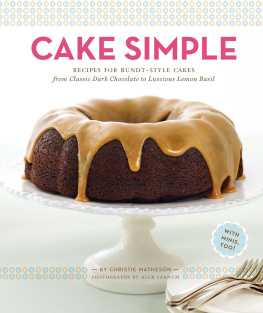
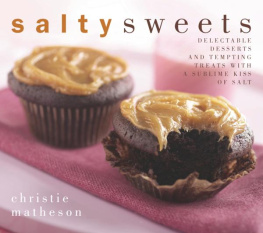
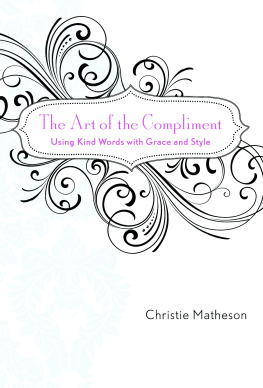
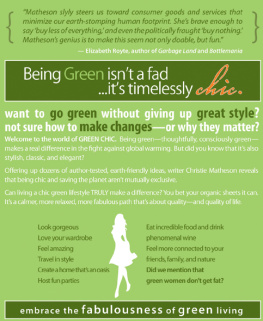


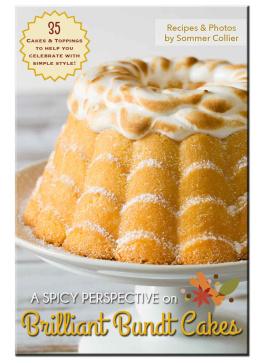
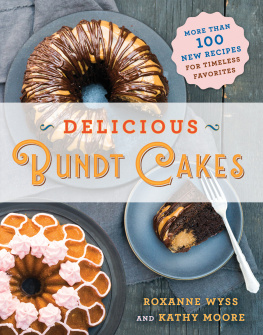
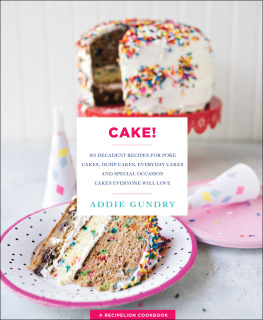
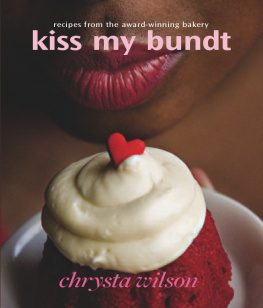
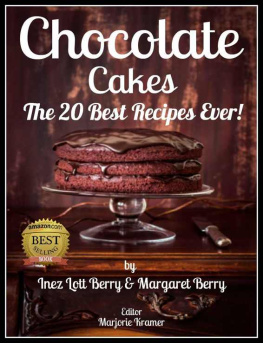

 You dont want to over- or underbake a cake, and so you should rely on suggested baking times as a guide only, and keep an eye on your cake as you get close to the time when you think it might be done because all ovens are a little different. (Theres no need to check it constantly; in fact, opening the oven door a lot near the beginning of baking isnt great for the cake because you want the temperature to stay consistent.) You should also get an oven thermometer to check how accurate your oven is.
You dont want to over- or underbake a cake, and so you should rely on suggested baking times as a guide only, and keep an eye on your cake as you get close to the time when you think it might be done because all ovens are a little different. (Theres no need to check it constantly; in fact, opening the oven door a lot near the beginning of baking isnt great for the cake because you want the temperature to stay consistent.) You should also get an oven thermometer to check how accurate your oven is.
